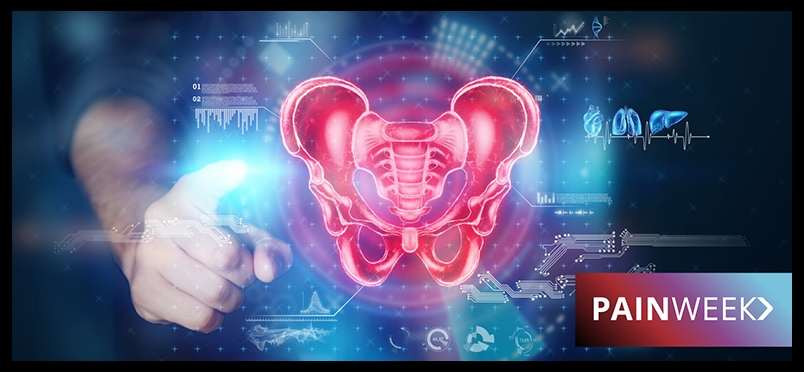| acute pain management
5 Step Guide to Differential Diagnosis of Pelvic Pain

Pelvic pain is a multifaceted condition that often spans multiple medical specialties. The challenge of diagnosing pelvic pain lies in its wide range of potential causes, which can include gynecological, urological, musculoskeletal, and neurological origins. A structured and systematic approach is essential for effective diagnosis and management.
Below is a practical guide to efficiently diagnosing pelvic pain, focusing on differential diagnosis.
Step 1: Conduct a Comprehensive History
A detailed patient history is the foundation of pelvic pain diagnosis. Balancing thoroughness with efficiency is key in high-volume clinical settings. Encourage patients to share a concise pain narrative, within about five minutes, focusing on key elements:
-
Onset, Location, and Character of Pain: Is the pain sudden or gradual? What is the precise location? Is it sharp, dull, or throbbing?
-
Associated Symptoms: Ask about urinary, bowel, or sexual symptoms. For example, urinary difficulties like incomplete bladder emptying or recurrent UTIs may suggest a urethral diverticulum.
-
Relation to Menstrual Cycle: In female patients, inquire about the relation of pain to the menstrual cycle, which could indicate conditions like endometriosis or pelvic congestion syndrome.
-
Surgical and Treatment History: Review past surgeries or treatments and their effects on the pain.
Step 2: Recognize Common Conditions and Locations
After taking a comprehensive history, focus on differential diagnosis by categorizing potential causes based on pain location.
|
Location |
Potential Causes |
|
Vulvar Pain |
Infections, irritants, vulvar atrophy, dermatologic conditions (e.g., lichen sclerosus), neuropathy |
|
Introital Pain |
Low testosterone, friction from sexual activity or clothing |
|
Urethral Pain |
Urethral caruncle, friction, urethral stricture, diverticulum, tumor, infections (STIs, UTIs) |
|
Pelvic Floor Muscle Pain |
Overactivity or strain of pelvic muscles due to exercises, dysfunction, or strain |
|
Gynecological Pain |
Endometriosis, pelvic inflammatory disease (PID), uterine fibroids, ovarian cysts, ectopic pregnancy, adhesions |
|
Male Organ Pain |
Prostatitis, testicular torsion, nerve pain, Peyronie’s disease, ejaculatory duct obstruction |
|
Bladder Pain |
Interstitial cystitis, bladder outlet obstruction |
|
Gastrointestinal Pain |
Irritable bowel syndrome (IBS), diverticulitis, appendicitis, levator ani syndrome, hemorrhoids |
|
Vascular Pain |
Pelvic venous congestion syndrome |
|
Bone and Joint Pain |
Pelvic girdle pain, osteitis, joint inflammation, nerve injuries |
|
Nerve Pain |
Pudendal neuralgia, cauda equina syndrome, spinal stenosis, peripheral neuropathy |
|
Psychological Factors |
Depression, anxiety, PTSD, history of sexual abuse, poor emotional coping |
For further exploration of these conditions, patients and clinicians can refer to The International Pelvic Pain Society (IPPS) for more in-depth information on specific pain syndromes and associated conditions.
Step 3: Perform a Targeted Physical Examination
A thorough physical examination is crucial for identifying the underlying cause of pelvic pain.
- Inspection and Palpation: In urethral pain or pelvic pressure cases, palpation may reveal urethral diverticula or Skene’s gland cysts.
- Bladder Sensitivity: In patients suspected of having interstitial cystitis (IC), assess for bladder sensitivity during examination. IC is often a diagnosis of exclusion, and bladder pain during filling can indicate conditions like Hunner’s lesions.
- Pelvic Floor Muscle Dysfunction: Evaluate for tension or tenderness in pelvic floor muscles, as pelvic floor dysfunction often overlaps with other pain syndromes.
For further guidance on performing physical exams, clinicians can consult the American College of Obstetricians and Gynecologists (ACOG) or the International Urogynecological Association (IUGA).
Step 4: Collaborate with a Multidisciplinary Team
Given that pelvic pain is often multifactorial, a multidisciplinary approach is essential. Coordinating care with specialists ensures comprehensive evaluation and management. Key care team members may include:
-
Urologists: For patients with recurrent urinary symptoms, hematuria, or concerns about tumors or cysts.
-
Gynecologists: For female patients with endometriosis, ovarian cysts, or other reproductive system issues.
-
Physical Therapists: For those with pelvic floor dysfunction, referral to a pelvic floor therapist can provide relief through targeted therapy.
-
Pain Management Specialists: For patients with chronic pain syndromes requiring long-term management.
Clinicians can refer to Pelvic Global for more information on specialized care for pelvic pain, including physical therapy and pain management techniques.
Step 5: Utilize Time-Saving Diagnostic Tools
Time-saving tools are crucial in a high-volume clinical environment. Incorporating digital symptom checklists, validated pain scales, and educational materials can streamline the diagnostic process while empowering patients.
-
Symptom Checklists: Tools like the Pelvic Pain Assessment Form from the International Pelvic Pain Society (IPPS) help patients articulate their symptoms clearly and guide clinicians in differential diagnosis.
-
Educational Resources: Direct patients to websites such as www.facingpelvicpain.org, which provides comprehensive information on managing pelvic pain, including treatment options and coping strategies. These resources empower patients to better understand their condition and actively participate in their care.
Additionally, validated tools like the Pelvic Pain and Urgency/Frequency (PUF) Questionnaire or Pain Disability Index (PDI) can help quantify the impact of pelvic pain on daily functioning and guide treatment decisions.
Takeaway Message
Diagnosing pelvic pain requires a systematic approach, combining a detailed history, targeted physical exams, and collaborative care. By recognizing common conditions, utilizing efficient diagnostic tools, and engaging multidisciplinary teams, clinicians can effectively navigate the complexities of pelvic pain.
Missed the pelvic pain sessions at PAINWeek 2024?
Don’t worry—PAINWeek 2024 On Demand, available in November 2024, has you covered. The pelvic pain track offers a comprehensive approach to diagnosis, helping clinicians navigate this complex condition. With content available through November 2025, you can access sessions anytime, earn CME/CE credits, and deepen your knowledge of pelvic pain management.
Take advantage of this opportunity—click here to get started.
Other Categories:
Did you enjoy this article?
Subscribe to the PAINWeek Newsletter
and get our latest articles and more direct to your inbox
